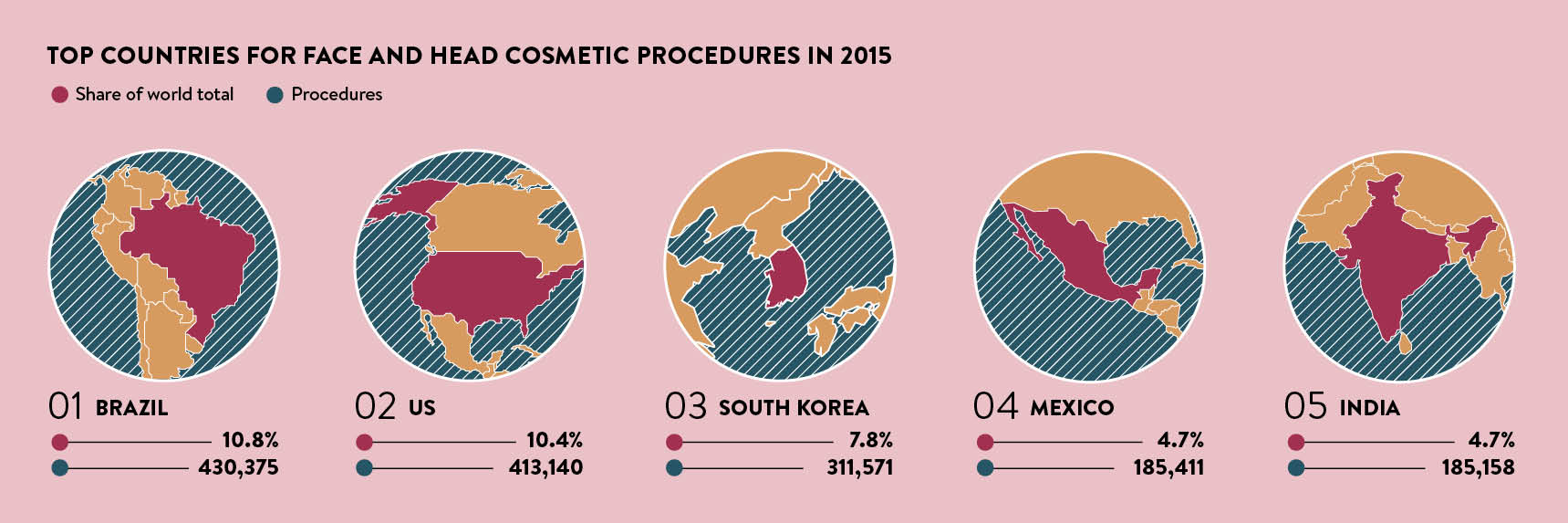“Wherever there is number, there is beauty.” So wrote the Greek philosopher Proclus. But can an ancient mathematical formula really help make today’s faces more attractive? A number of doctors insist it can. So how can phi – also known as the golden ratio – play a role in contemporary aesthetic medicine?
What makes a face beautiful? Doe eyes? A Grecian nose? A winning smile? Certainly, all of these play a role, but for some doctors the answer is something simpler.
Dr Tatiana Lapa, medical director of The Studio Clinic in London’s Harley Street, says a specific mathematical ratio can explain why some people are considered attractive and others are not. The magic number? 1.618.
The ancient Greeks discovered some 2,500 years ago that when a line is divided into two parts in a ratio of 1: 1.618, it is thought to create a profoundly appealing proportion. Artists, including Leonardo Da Vinci and Botticelli, are said to have used it in planning their paintings, and it’s also found in nature, in the curl of a shell or the heart of a flower.
Over the centuries, this ratio has been dubbed the golden ratio, the golden section, the divine proportion or more recently, phi, named after Phidias, a Greek sculptor and mathematician who is believed to have used it when designing sculptures for the Parthenon in Athens.
Uncovering the true science of beauty
In the last few decades, it has been applied to facial beauty too and adopted as a guideline for aesthetic treatments.
This may sound strange, particularly if you believe that human beauty is entirely individual and subjective. But that’s not quite true, says Dr Lapa. “There are certain universally accepted features of female beauty, such as high cheekbones, petite nose, good skin and full lips. However, the science of beauty is much more complex. We may be unaware of it, but subconsciously we judge beauty by facial symmetry and proportion – and not just the features of the face,” she says.
The ‘phi mask’ has been used to create a clinical assessment tool to determine attractiveness and the result looks quite a lot like Angelina Jolie
Dr Maryam Zamani, London-based aesthetic doctor and oculoplastic surgeon, agrees. “Cross- cultural research has illustrated that no matter ethnicity or race, our perception of beauty is based on the ratio proportions of 1.618. As the face comes closer to this ratio, it becomes perceptibly more beautiful.”
“For example, the ideal ratio of the top of the head to the chin versus the width of the head should be 1.618,” says Dr Zamani.

Angelina Jolie’s face resembles the ‘phi’ mask
Further examples of where the ratio is said to be ideal in the human face include the width of the lips compared to the base of the nose, the measurement from outer eye to outer eye to the width of the lips, the distance from the bottom of the nose to the chin to the distance from the centre of the lips to the chin, the distance from the top of the nose to the centre of the lips should be 1.618 times the distance from the centre of the lips to the chin, and the hairline to the upper eyelid should be 1.618 times the length of the top of the upper eyebrow to the lower eyelid.
How plastic surgeons use the golden ratio
US plastic surgeon Dr Stephen Marquardt measured hundreds of parameters of the face and applied the golden ratio to establish the outlines of the perfect face. The “phi mask”, as it is known, has been used to create a clinical assessment tool to determine attractiveness and the result looks quite a lot like Angelina Jolie.
Dr Lapa says she uses the mask with new patients to help them understand how she can enhance their features. Some doctors and surgeons are so convinced of this that they use golden-ratio calipers in their practice. These can be used to mark out the ideal ratio on a patient’s face.
Fashionable aesthetic enhancements that ignore the golden ratio may even make us look worse. Dermatologist Dr Stefanie Williams says: “The ideal ratio of upper to lower lip volume is 1:1.6. That’s why when treating the lips, the lower lip should have slightly more volume than the upper lip. If upper and lower lip are made the same, it looks strange and unnatural.”
How a perfect face can change as we age
It’s likely that we consider golden-ratio facial proportions to be beautiful because evolution has taught humans subconsciously to recognise female features such as plump cheeks, full lips and a narrow jaw, which are typical of youthfulness and high estrogen levels, as powerfully appealing signals of fertility.
Scientists from the Chinese Academy of Sciences have found that certain facial measurements, specifically the width of the mouth and nose, and the distance between the mouth and nose, tend to expand with age. Crucially, these changes are a far better predictor of biological ageing than multiple blood tests.
This means that as we age, even faces that previously closely matched golden-ratio proportions tend to deviate from them.
Plastic surgeons Rajiv Grover and Sydney Coleman studied facial scans taken at different ages, and reported that we lose volume from our faces around seven years before our skin starts to sag. This changes the face shape from a broad triangle to a narrower rectangle.
Another study by Dallas plastic surgeon Dr Rod Rohrich revealed we first lose fat from around the eyes, then from the middle of the cheek under the eye, then from cheekbones, the inner jawline either side of the mouth and the nose-to-mouth lines, and finally from the forehead and sides of the face.
In addition, by the time a woman reaches 40, her philtrum – the groove above the upper lip – will have drooped 3mm to 15mm, extending the length of the lower face. A few millimetres may not sound much, says London plastic surgeon Dr Yannis Alexandrides of the 111 Harley Street clinic, and we may not even notice it consciously, but these tiny shifts “can be a bigger sign of ageing than wrinkles”.

How plastic surgeons capture the youthful ideal
This suggests that restoring proportions closer to the youthful ideal may have the potential both to improve attractiveness in younger women and rejuvenate older faces. But how can this be achieved?
Aesthetic practitioner Dr Sarah Tonks says: “Dermal fillers are the primary tool for subtly altering facial proportions.” If the face is long and narrow, Dr Lapa uses either hyaluronic acid dermal fillers or the long-lasting, collagen-stimulating filler Ellanse to enhance the projection and width of the cheekbones. If a too-high forehead is an issue, she can inject botulinum toxin such as Botox to raise the eyebrows, or if the lower face is too short, she can enhance the jawline and even extend and add symmetry to the chin using fillers.
Restoring proportions closer to the youthful ideal may have the potential both to improve attractiveness in younger women and rejuvenate older faces
Dr Tonks likes to fill the temples, which hollow with age, using hyaluronic acid to add width and proportion to the eye area. A surgical lip lift, says Dr Alexandrides, can reduce lower facial height.
The need for an artistic eye is the overwhelming consensus of the majority of cosmetic doctors. As Dr Rita Rakus, whose clinic is in London’s Knightsbridge, says: “Nature does not always follow the rules of beauty. Our first priority is to find out exactly the look our clients want to achieve. In-depth consultations take place before the treatment and we usually ask people to bring in photos of themselves that they like. Our ethos is to give our clients a naturally beautiful look rather than completely changing their appearance.”
While the golden ratio may help us become beautiful, plastic surgeon Mr Grover says over-reliance on formulae can lead to an army of California-style cosmetic clones. “Treatments should all be about looking individual,” he concludes. “Not about being perfect.”
Uncovering the true science of beauty

